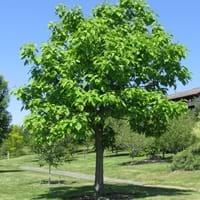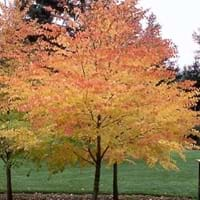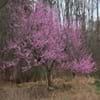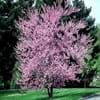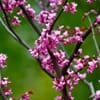Life Span
Perennial
Perennial
Origin
United States, Southeastern United States, Central United States
Eastern Asia, China, Japan
Types
not available
Heronswood Globe , Kreukenberg Dwarf
Number of Varieties
Not Available
Habitat
Moist woods, Swamps, Woodlands
shaded moist road banks, Wet Woods
USDA Hardiness Zone
4-8
4-8
Sunset Zone
2a, 2b, 3a, 3b, 4, 5, 6, 7, 8, 9, 10, 11, 12, 13, 14, 15, 16, 17, 18, 19, 20, 21, 22, 23, 24
2b, 3a, 3b, 4, 5, 6, 14, 15, 16, 18, 19, 20
Habit
Spreading
Oval or Rounded
Flower Color
White, Yellow, Purple
Red, Green
Flower Color Modifier
Bicolor
Bicolor
Fruit Color
Green, Brown
Green, Copper, Sandy Brown
Leaf Color in Spring
Light Green
Purple, Light Green, Bronze
Leaf Color in Summer
Light Green
Green
Leaf Color in Fall
Yellow green, Brown
Yellow, Gold, Orange Red
Leaf Color in Winter
Not Available
Not Available
Leaf Shape
Heart-shaped
Heart-shaped
Plant Season
Spring, Summer, Fall
Spring, Summer, Fall, Winter
Sunlight
Full Sun, Partial Sun, Partial shade
Full Sun, Partial Sun
Type of Soil
Clay, Loam
Clay, Loam
The pH of Soil
Acidic, Neutral, Alkaline
Acidic, Neutral
Soil Drainage
Well drained
Well drained
Bloom Time
Spring
Early Spring
Tolerances
Wet Site, Drought
Not Available
Where to Plant?
Ground
Ground
How to Plant?
Stem Planting
Seedlings, Transplanting
Plant Maintenance
Low
Medium
Watering Requirements
Keep ground moist
Keep ground moist, Use Mulches to help prevent water loss during hot and windy weather
In Summer
Lots of watering
Lots of watering
In Spring
Moderate
Moderate
In Winter
Average Water
Average Water
Soil pH
Acidic, Neutral, Alkaline
Acidic, Neutral
Soil Type
Clay, Loam
Clay, Loam
Soil Drainage Capacity
Well drained
Well drained
Sun Exposure
Full Sun, Partial Sun, Partial shade
Full Sun, Partial Sun
Pruning
Remove damaged leaves, Remove dead branches, Remove dead leaves
Prune if you want to improve plant shape, Remove dead branches
Fertilizers
Apply 10-10-10 amount, Do not let fertilizers touch the leaves, Doesn't require fertilization when grown in rich soil
All-Purpose Liquid Fertilizer, Apply 10-10-10 amount
Pests and Diseases
Anthracnose, Brown Rot, Caterpillars, fungus, Sawfly Larvae, Verticillium Wilt
Bacterial leaf spot, Leafminers, Red blotch
Plant Tolerance
Drought, Wet Site
Salt and Soil Compaction, Shade areas, waterlogging
Flowers
Showy
Insignificant
Flower Petal Number
Single
Not Available
Foliage Texture
Coarse
Medium
Foliage Sheen
Glossy
Matte
Attracts
Not Available
Birds, Butterflies
Allergy
Skin irritation
sneezing, Sore eyes
Aesthetic Uses
Showy Purposes
Beautification, Cottage Garden
Beauty Benefits
Not Available
Making cosmetics, Skin Problems
Environmental Uses
Air purification
Shadow Tree, soil stabilisation
Medicinal Uses
Not Available
Not Available
Part of Plant Used
Whole plant, Wood
Whole plant
Other Uses
Used as Ornamental plant, Used for woodware, Used in Furniture
Showy Purposes, Used as Ornamental plant, Used in pulpwood and lumber production
Used As Indoor Plant
No
No
Used As Outdoor Plant
Yes
Yes
Garden Design
Feature Plant, Shade Trees, Street Trees
Feature Plant, Shade Trees, Street Trees
Botanical Name
CATALPA speciosa
CERCIDIPHYLLUM japonicum
Common Name
Northern Catalpa
Katsura Tree
In Hindi
Northern Catalpa
Cercidiphyllum
In German
Northern Catalpa
Kuchenbäume
In French
Nord Catalpa
Cercidiphyllum
In Spanish
Catalpa Norte
Cercidiphyllum
In Greek
Βόρεια Catalpa
Cercidiphyllum
In Portuguese
Northern Catalpa
Cercidiphyllum
In Polish
Północnej Catalpa
Grujecznik
In Latin
Northern Catalpa
Cercidiphyllum
Phylum
Magnoliophyta
Magnoliophyta
Class
Magnoliopsida
Magnoliopsida
Order
Scrophulariales
Hamamelidales
Family
Bignoniaceae
Cercidiphyllaceae
Genus
Catalpa
Cercidiphyllum
Clade
Angiosperms, Asterids, Eudicots
Angiosperms, Eudicots
Tribe
Not Available
Not Available
Subfamily
Not Available
Not Available
Number of Species
Not Available
Importance of Northern Catalpa and Katsura Tree
Want to have the most appropriate plant for your garden? You might want to know the importance of Northern Catalpa and Katsura Tree. Basically, these two plants vary in many aspects. Compare Northern Catalpa and Katsura Tree as they differ in many characteristics such as their life, care, benefits, facts, etc. Every gardener must at least have the slightest clue about the plants he wants to plant in his garden. Compare their benefits, which differ in many ways like facts and uses. The medicinal use of Northern Catalpa is Not Available whereas of Katsura Tree is Not Available. Northern Catalpa has beauty benefits as follows: Not Available while Katsura Tree has beauty benefits as follows: Not Available.
Compare Facts of Northern Catalpa vs Katsura Tree
How to choose the best garden plant for your garden depending upon its facts? Here garden plant comparison will help you to solve this query. Compare the facts of Northern Catalpa vs Katsura Tree and know which one to choose. As garden plants have benefits and other uses, allergy is also a major drawback of plants for some people. Allergic reactions of Northern Catalpa are Skin irritation whereas of Katsura Tree have sneezing and Sore eyes respectively. Having a fruit bearing plant in your garden can be a plus point of your garden. Northern Catalpa has showy fruits and Katsura Tree has showy fruits. Also Northern Catalpa is not flowering and Katsura Tree is not flowering . You can compare Northern Catalpa and Katsura Tree facts and facts of other plants too.
